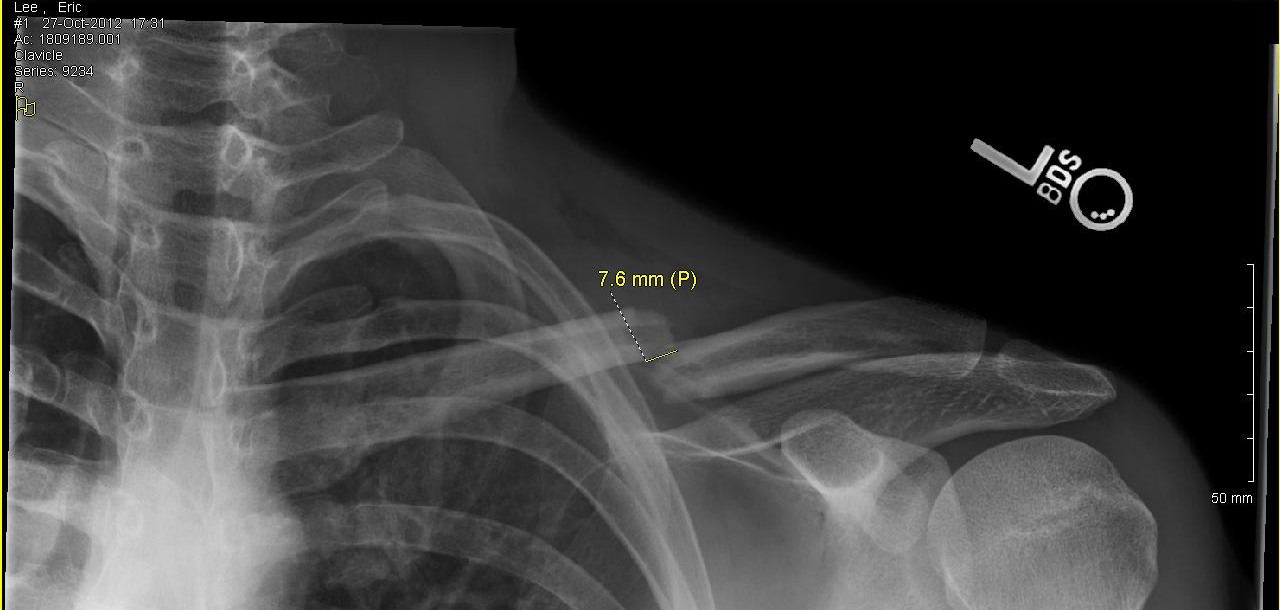
Where further clarification was necessary, study authors were contacted directly. Data collection and analysisĭata from included studies were extracted to create the evidence table. It examines the main domains of a case-series study including study design, population, intervention and co-intervention(s), outcome measures, statistical analysis, results and conclusions, and competing interest and sources of financial support. The assessment tool is a 20-criterion quality appraisal checklist. Quality appraisal was performed using the checklist developed by Institute of Health Economics (IHE). Two examiners independently assessed the potential eligible studies, and the accuracy and completeness of the primary data. We excluded studies with medial clavicle physeal injuries, paediatric and adolescent fractures, nonunion, stress fracture and associated sternoclavicular or acromioclavicular joint dislocation. Studies were included if they reported outcome of treatment of acute medial clavicle fracture in adult (all levels of evidence). The abstracts of the shortlisted studies were then reviewed, and selected abstracts were considered for full-text review. The studies were shortlisted if they pertained to medial clavicle fracture epidemiology or management. English language restriction was applied. Bibliographics of all accessed papers were searched for any undetected studies. The search terms used were as follows: “clavicle fracture”, “medial clavicle fracture”, “internal fixation”, “bipolar” and “segmental clavicle fracture”. In July 2018, an electronic search of MEDLINE (1950 to present) (via PubMed), Embase (via OVID) and Cochrane Database of Systematic reviews (CDSR) was performed. The systematic review was performed following Preferred Reporting Items for Systematic Reviews and Meta-Analyses (PRISMA) guidelines. Further high-quality research in this area is warranted to investigate the outcomes and indication for nonoperative versus operative management of these fractures. Nonoperative treatment of these fracture seems to result in high union rate and overall favourable functional outcome. Medial third clavicle fractures represent a distinct subgroup of clavicle fractures. There was no report of catastrophic intraoperative complication amongst patients undergoing surgical fixation. The functional result following nonoperative treatment indicated overall “good” functional outcome. The nonunion rate following nonoperative management was 4.6% (5/108). The overall nonunion rate was 5% (7/137). Twenty-nine patients were treated operatively.

One hundred ninety-one patients received nonoperative treatment. In 9% of patients the fracture was segmental. The most common fracture type was extra-articular, with no or minimal displacement (60%). Associated injuries occurred in 81% of patients, with thoracic trauma being the most common (47%). Road traffic accident was the most common mechanism of injury (64%). Seventy-eight percent of fractures occurred in men with mean age of 48 years (16–94 years). Two hundred twenty fractures were identified.

Clavicle fracture series#
Seventeen studies were included, consisting of 7 case series and 10 case reports. Electronic searches of the MEDLINE, EMBASE and Cochrane databases were performed. We performed a systematic review according to PRISMA guidelines to evaluate the demographics, clinical profile, management and treatment outcome. Medial third clavicle fractures are rare injuries, with limited information available on their characteristics or treatment results.


 0 kommentar(er)
0 kommentar(er)
